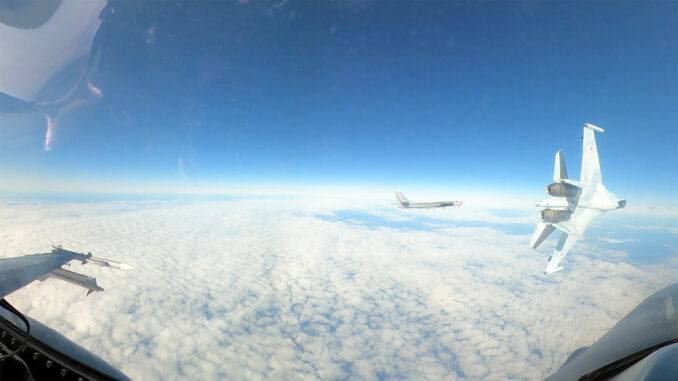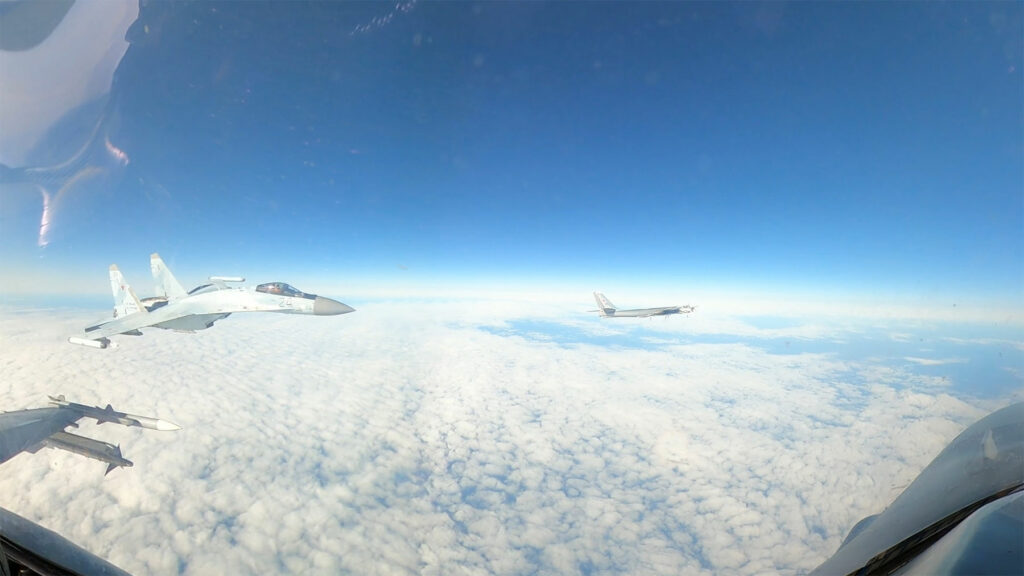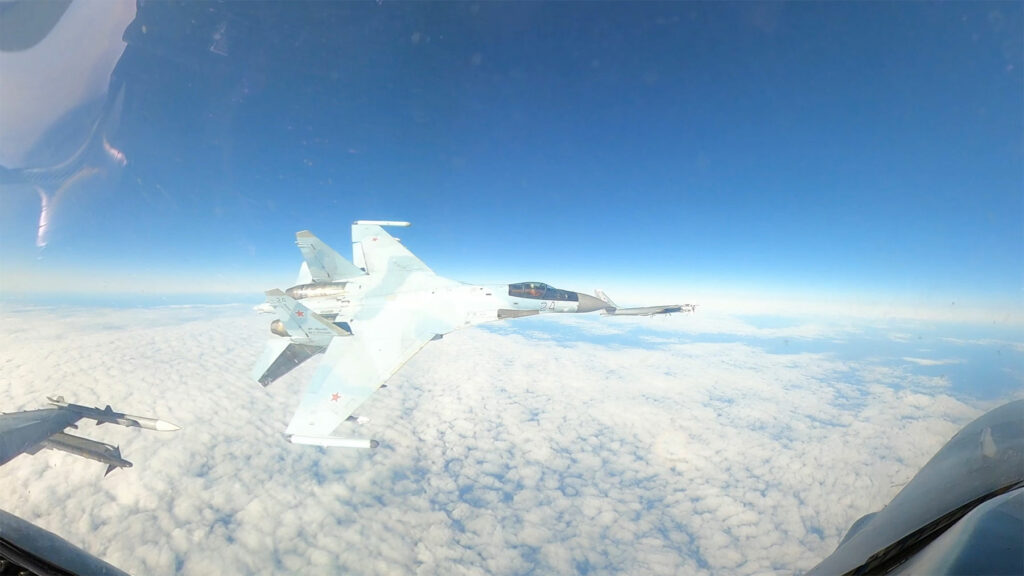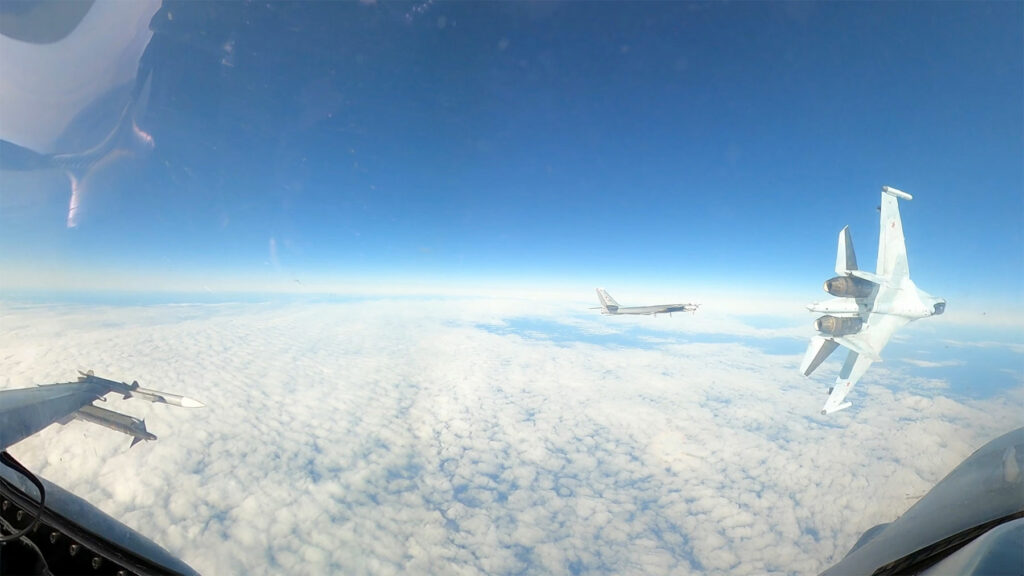
A Russian Su-35 nearly collided with an American fighter jet near Alaska, highlighting growing air tensions between Russia and the USA.
On September 23, a serious air incident occurred in the Alaska Air Defense Identification Zone (ADIZ). A Russian Su-35 fighter aircraft narrowly missed colliding with an American fighter, most likely an F-16, during an interception by the North American Aerospace Defense Command (NORAD). This event, captured in images and broadcast by NORAD, highlights escalating tensions and dangerous behavior on the part of Russian pilots.
For several years, the Pentagon has been reporting “unprofessional” and “dangerous” behavior by Russian pilots, particularly during interceptions of US intelligence aircraft in the Black Sea and Baltic regions. The loss of an MQ-9 Reaper drone after a collision with a Russian Su-27 near Crimea is a prominent example.
The September 23 incident is particularly worrying, as it took place in an area where such interactions are frequent, but generally without notable incident. General Gregory Guillot, head of NORAD, described the behavior of the Russian Su-35 as dangerous and unprofessional, stressing that it endangered the safety of all the aircraft involved.
This event underlines the need to establish clear protocols for air interactions to avoid potential military escalations. It also reflects a more aggressive posture by the Russian air force, which could have significant implications for international security.

Russian pilots’ behavior: escalating tensions
For several years now, the US armed forces have repeatedly reported unprofessional and dangerous behavior by Russian fighter pilots. These incidents are particularly frequent in strategic areas such as the Black Sea and the Baltic, where American intelligence aircraft are regularly intercepted. For example, in 2018, a Russian Su-27 flew within 1.5 meters of an American EP-3 Aries reconnaissance aircraft, creating an extremely dangerous situation.
The loss of the MQ-9 Reaper drone in March 2023 after a collision with a Russian Su-27 near Crimea marked a high point in this series of incidents. The drone, valued at around €30 million, was on a surveillance mission when it was struck, resulting in its destruction.
American officials note a more aggressive posture by Russian forces since the start of the conflict in Ukraine in 2022. This aggressiveness also extends to other theaters of operation, including Syria, where Russian forces have stepped up risky actions in close proximity to U.S. aircraft, increasing the risk of unintended incidents.
Interception mechanisms and rules of engagement
Air intercepts are standard procedures for identifying and monitoring aircraft approaching national airspace. In the Alaska ADIZ, the US Air Force, under the authority of NORAD, regularly intercepts Russian strategic bombers and intelligence aircraft, such as the Tu-95 “Bear”. These aircraft are often escorted by Su-35 fighters, which is common practice.
International rules of engagement stipulate that intercepts must be conducted in a safe and professional manner. Intercepting aircraft must maintain a safe distance, usually several hundred meters, and avoid any sudden maneuvers that could endanger the other aircraft. Radio communication is also essential to avoid misunderstandings.
However, in the incident of September 23, the Russian Su-35 violated these rules by passing between the Tu-95 it was escorting and the American fighter, then cutting off the latter. This maneuver created a dangerous situation, as a mid-air collision was only narrowly avoided. At speeds of up to 900 km/h, pilots have very little time to react, which increases the risk of accidents.

Technical implications of the incident
The Su-35 is a generation 4++ multi-role fighter, equipped with advanced technologies such as electronically scanned radar and vectored thrust engines. These features give it super-maneuverability, enabling it to carry out complex maneuvers at high speed. The American F-16 is a light fighter, renowned for its maneuverability and versatility, used by over 25 countries worldwide.
Despite these technological advances, the incident underlines the fact that the human factor remains crucial to air safety. Anti-collision warning systems and communication protocols cannot prevent accidents if pilots do not respect the established rules. A collision between these two aircraft could have resulted in the total destruction of the planes, given the amount of fuel and weaponry they can carry, not to mention the environmental risk of scattering debris over a vast area.
Strategic and diplomatic consequences
This incident has heightened diplomatic tensions between the United States and Russia, two military powers with nuclear capabilities. It raises questions about Russian intentions, and whether these actions were deliberate to test American reactions, or to demonstrate an assertive military presence in strategic areas.
The US could consider diplomatic responses, such as official protests or the summoning of ambassadors. On the military front, there could be a reassessment of interception protocols or an increase in air patrols in the region. However, any escalation must be carefully managed to avoid further deterioration in relations between the two countries.

The need for enhanced dialogue and protocols
To reduce the risk of similar incidents in the future, it is essential that both nations engage in open dialogue on rules of engagement and security protocols. The reactivation of military communication channels can facilitate the resolution of misunderstandings and real-time coordination.
Agreements such as the Incident Prevention at Sea Agreement (INCSEA) signed in 1972 between the USA and the Soviet Union could serve as a model for similar arrangements in the air domain. In addition, the involvement of international organizations such as the International Civil Aviation Organization (ICAO) could help establish universal standards for air interception.
War Wings Daily is an independant magazine.